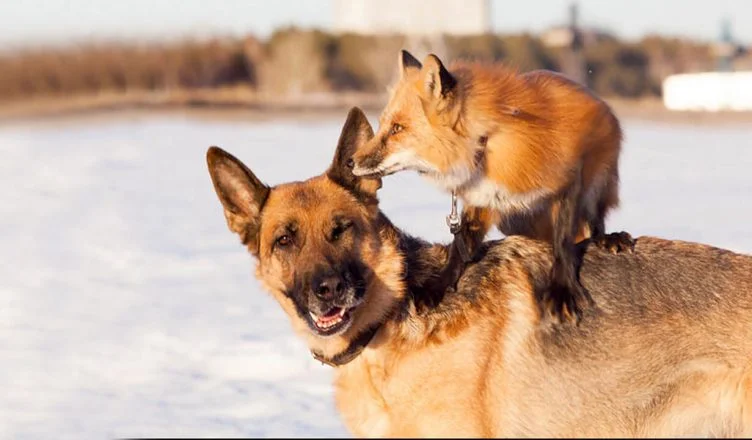For thousands of years, human beings have raised and bred domestic dogs deliberately and selectively to create a vast and diverse spectrum of dog breeds. Isn’t it amazing to think that the tiny Chihuahua, the wolf-like Malamute, and the humongous Saint Bernard are all members of the same species? However, there has recently been a surge in the trend of breeding dogs with their close relatives like wolves, and this has made some people wonder if dogs could be bred with foxes as well.
Can Dogs and Foxes Breed?
The short answer to the question is no. Dogs and foxes cannot breed even though they both belong to the same family, Canidae. It is because of biological differences like a different number of chromosomes and a huge behavioral gap. Here’s all you need to know about the differences between dogs and foxes and why they can’t breed with each other.
Is Crossbreeding Between Dogs and Foxes Possible?
In order to breed two species together and produce fertile offspring, both animals should be closely related to each other and they must have the same number of chromosomes and a similar genetic pattern. This is why crossbreeding between dogs and foxes is not possible. While they are related, dogs and foxes have radically different DNA and a completely different number of chromosomes. Dogs (Canis lupus familiaris) have 78 chromosomes while Red foxes (Vulpes vulpes) have only 35 – 39.
Additionally, foxes are small compared to average dogs, and unlike their distant relatives, foxes are solitary animals with very different mating behaviors. These biological differences, coupled with the difference in their behavior, make it unlikely that the two canids would naturally be able to mate.
Why Are Dogs and Foxes So Different?
The vast differences between dogs and foxes arise from the fact that foxes diverged from the wolf lineage about 12 million years ago. Dogs only diverged from the lineage around 40,000 years ago, making their closest relative the modern-day gray wolf. This is why dogs and wolves share a lot of the same genetics, making hybridization between the two possible.
The geographical territories they come from also set some differences between foxes and dogs. The fox is the most widely dispersed member of the Canidae family, with their lineages spread across multiple continents and regions. Dogs can also be found all across the world, but the reason for that is domestication.
Can Dogs Breed with Other Canids?
Household dogs can interbreed with several other wild canines that also have 78 chromosomes. This includes the dhole, coyote, and dingo. Examples include:
- Wolf dog: a canine produced by mating a domestic dog with a gray wolf, eastern wolf, red wolf, or Ethiopian wolf.
- Coydog: a canid hybrid between a male coyote and a female dog that is occasionally found in wild.
- A dingo-dog hybrid is a cross between a dingo and a domestic dog. Because of crossbreeding of domestic dogs with dingoes and the resulting hybrids, there is a much wider range of colors and body shapes today among the wild dogs in Australia.
You might also be interested in Can Dogs and Wolves Breed?
Conclusion
While the idea of a fox-dog hybrid is intriguing, it is probably impossible unless genetic research can progress further. However, many breeds of dogs, like the Pomeranian, the Shiba Inu, and the Corgi, do have vulpine traits, if that’s what you’d like to see in your canine companion. There are also reports of foxes being bred to have physical and behavioral traits that resemble dogs, so fox-dog hybrids might just be possible in the near future.
Thank you for reading the article.
To explore more, check out other articles that we have covered on dog hybrid.
Do you have a hybrid dog? How do you care for them? We would love to hear from you. Please share with our community by leaving a comment below!
